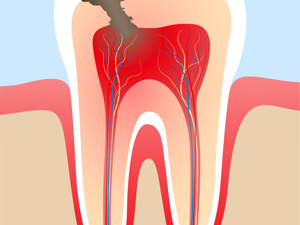来源 | 医学界内分泌频道
2018年10月11日,第29届长城心脏病学会议、亚太心脏大会2018、国际心血管病预防与康复会议2018在北京国家会议中心拉开帷幕。糖尿病是心血管疾病的重要危险因素,糖尿病的积极预防对于心血管疾病防控具有重要的意义和影响。
在拜耳医药保健公司的卫星会上,中日友好医院孙艺红教授和北京大学第一医院张俊清教授深入探讨了糖尿病前期人群(尤其是合并冠心病者)预防糖尿病的意义,并阐述了具有循证证据的阿卡波糖作为预防糖尿病的干预药物的重要价值。
抗击“糖”心风暴:防微杜渐,使命共存
欧洲心脏调查显示,31%的冠心病患者合并糖尿病,而在无糖尿病史的患者中58%被检测出糖代谢异常1。中国心脏调查表明,冠心病合并糖代谢异常患病率为76.9%2。冠心病遇上糖尿病的几率很大,孙艺红教授将这比喻为“临床致命的相会”。
伴有糖尿病的冠心病患者,其病变通常累及多支血管,且血管上病变的弥漫程度更为严重3。与非糖尿病患者相比,糖尿病患者经皮冠脉穿刺术(PCI)术后主要不良心血管事件发生率及心血管死亡率显著增加4。孙艺红教授解释说,“糖”心风暴形成的土壤,在于高血糖促进氧化应激及减少NO作用、炎症作用改变高凝状态,诱导血管内皮的损伤,导致动脉粥样硬化斑块形成5。而且,糖尿病患者斑块中的新生血管显著更多,会加重炎症和斑块活动,最终发生心血管事件6,7。
令人担忧的是,糖尿病前期在大血管疾病的患者中已普遍持续存在8。糖耐量异常(IGT) 已成为心血管疾病风险快速上升的“拐点”。一项纳入连续接受冠状动脉造影或确诊冠心病的1046例患者回顾性研究提示,IGT与冠状动脉硬化显著独立相关9。一旦IGT进展为糖尿病,心血管事件风险翻倍,且进展越快,风险越高10,也使冠心病的治疗变得更加复杂。
因此,必须未雨绸缪,防微杜渐,在心血管疾病患者中重视糖尿病的筛查、预防和控制。《心血管内科糖代谢异常早期筛查及管理专家共识》建议,如心内科患者符合:年龄≥45岁、超重、糖尿病家族史、妊娠糖尿病史、曾被诊为糖尿病前期中任何一个条件,应进行血糖代谢异常的进一步筛查如OGTT11。
在糖尿病阶段进行的强化降糖干预,不一定带来心血管获益12,13。对于心血管获益的关注,有必要提前至糖尿病前期。
多中心、双盲、安慰剂对照、随机试验STOP-NIDDM研究纳入了1429例IGT患者,其中714例接受阿卡波糖治疗。结果显示,阿卡波糖(100mg)延缓无冠心病史的IGT患者进展为糖尿病,降低心血管事件风险14。
ACE研究也表明,在生活方式干预基础上,伴有冠心病的IGT患者接受阿卡波糖治疗3年,新发糖尿病风险降低18%,不影响再发心血管事件风险,且有减少心血管死亡的趋势15。
有研究证明,阿卡波糖治疗可改善血管内皮功能、炎症反应和颈动脉斑块的稳定16,17。
守住冠心病患者糖代谢的第一道防线,心内科和内分泌科具有相同的使命。阿卡波糖延缓糖代谢异常及动脉粥样硬化进展,助力糖尿病预防和心血管风险管理。
预防糖尿病,未雨绸缪正当时
一开场,张俊清教授就阐述了糖尿病前期带来的巨大挑战。第八版国际糖尿病联盟(IDF)地图显示,糖尿病前期患病率与糖尿病患病率相当,在非洲和美洲地区,前者甚至已超越后者18,中国约1/3成人处于糖尿病前期状态19,20,21。
大庆研究显示,IGT如不干预,进展为糖尿病风险很高22。早在糖尿病前期, 心血管疾病发生风险增加13%,微血管并发症风险也已增加24,25。以上提示应尽早将糖尿病前期作为干预节点。
国内外研究均表明,生活方式干预可显著降低糖尿病发病风险及其血管并发症的发生风险22,26,27。然而,芬兰PDS研究显示,强化生活方式干预情况下达到减重和饮食控制目标的患者仍不足50%28;美国DPP研究同样提示,强化生活方式干预的减重目标难以维持,80%体重在5年内恢复29,其有效性会随着时间的推移而下降30,直接医疗花费昂贵31。总之,强化生活方式干预“知易行难”,它的效果在真实世界中值得进一步探索。
那么,使用药物干预对于糖尿病前期患者的效果如何?阿卡波糖延缓碳水化合物吸收而降低餐后血糖,节约餐后胰岛素分泌,改善β细胞功能,安全性良好32。ACE研究证实,在生活方式干预基础上,阿卡波糖能进一步降低新发糖尿病风险15。
糖尿病前期的药物干预,在国内外权威指南的推荐更积极:
2018年美国临床内分泌医师协会(AACE)/美国内分泌学院(ACE)指南建议糖尿病前期患者在生活方式基础上添加药物治疗,如阿卡波糖等低风险药物33。从2007年“药物干预糖尿病前期证据不充分”到 2018年“糖尿病前期患者推荐药物干预预防糖尿病”34,35,美国糖尿病学会(ADA)指南的变化显示出药物干预需更积极、时机更前沿的一面。
2017年《中国2型糖尿病防治指南》则首次建议糖尿病前期个体在强化生活方式干预6个月效果不佳且合并其他危险因素者,可考虑药物干预,而阿卡波糖在糖尿病前期人群中长期应用的安全性证据较为充分36。
总结
全球糖尿病前期患病率居高不下,患者进展为糖尿病的风险和心血管风险较高。一旦IGT进展为糖尿病, 心血管事件风险翻倍。因此必须防微杜渐,未雨绸缪,尽早对糖尿病前期进行干预。生活方式干预在糖尿病前期的管理中重要且有效,但知易行难。药物干预降低风险,具备临床可操作性,在指南中的推荐日趋积极。作为中国唯一具有IGT适应证的口服降糖药,阿卡波糖降低糖尿病发生风险及心血管事件风险,安全可靠,是IGT人群优选的降糖药物。
参考文献
1. Bartnik M, Rydén L, Ferrari R, et al. The prevalence of abnormal glucose regulation inpatients with coronary artery disease across Europe. The Euro Heart Survey on diabetes and the heart. Eur Heart J. 2004, 25(21): 1880-90.
2. 中国心脏调查组. 中国住院冠心病患者糖代谢异常研究——中国心脏调查. 中华内分泌代谢杂志, 2006, 22(1): 7-10.
3. David H,Fitchett, Milan Gupta, Michael E. Farkouh, et al. Coronary Artery Revascularization in Patients With Diabetes Mellitus. Circulation, 2014, 130: e104-e106.
4. Billinger M, Räber L, Hitz S, et al. Long-term clinical and angiographic outcomes of diabetic patients after revascularization with early generation drug-eluting stents. American Heart Journal, 2012, 163(5): 876-886.
5. Paneni F, Beckman JA, CreagerMA, et al. Diabetes and vascular disease: pathophysiology, clinical consequences, and medical therapy: part I. Eur Heart J, 2013, 34(31): 2436-43.
6. Purushothaman K, Purushothaman M, Muntner P, et al. Inflammation, neovascularization and intra-plaque hemorrhage are associated with increased reparative collagen content: Implication for plaque progression in diabetic atherosclerosis. Vascular Medicine, 2011, 16(2): 103.
7. Hayden M R, Tyagi S C. Vasa vasorum in plaque angiogenesis, metabolic syndrome, type 2 diabetes mellitus, and atheroscleropathy: a malignant transformation. Cardiovascular Diabetology, 2004, 3(1): 1.
8. Kleinherenbrink W, Osei E, den Hertog HM, et al. Prediabetes and macrovascular disease: Review of the association, influence on outcome and effect of treatment. Eur J Intern Med, 2018, 55: 6-11.
9. Saely C H, Drexel H, Sourij H, et al. Key role of post challenge hyperglycemia for the presence and extent of coronary atherosclerosis: anangiographic study. Atherosclerosis, 2008, 199(2): 317-322.
10. Li G, Zhang P, Wang J, et al. The long-term effect of lifestyle interventions toprevent diabetes in the China Da Qing Diabetes Prevention Study: a 20-year follow-up study. Lancet, 2008, 371(9626):1783-1789.
11. 心血管内科糖代谢异常早期筛查及管理专家组. 心血管内科糖代谢异常早期筛查及管理专家共识. 中华内科杂志, 2012, 51(7): 574-578.
12. Patel A, Mae Mbaon S, Chalmers J, et al. The ADVANCE collaboartive gorup. Intensive blood glucose control and vascular outcomes in patients with type 2diabetes. N Engl J Med, 2008, 358: 2560-72.
13. Gerstein HC, Miller ME, Byington RP, et al. Theaction to control cardiovascular risk in diabetes study group. Effects of intensive glucose lowering in type 2 diabetes. N Engl J Med, 2008, 358: 2545-2559.
14. Chiasson JL, Josse RG, Gomis R, et al. Acarbose for prevention of type 2diabetes mellitus: the STOP-NIDDM randomised trial. Lancet, 2002, 359(9323):2072-7.
15. Holman R R, Coleman R L, ChanJ, et al. Effects of acarbose on cardiovascular and diabetes outcomes in patients with coronary heart disease and impaired glucose tolerance (ACE): a randomised, double-blind, placebo-controlled trial. Lancet Diabetes Endocrinol, 2017, 5(11): 877-886.
16. Node K, Inoue T. Postprandial hyperglycemia as anetiological factor in vascular failure. Cardiovascular Diabetology, 2009, 8(1):23.
17. Hirano M, Nakamura T, Obata JE, et al. Early improvement in carotid plaque echogenicity by acarbose in patients with acute coronary syndromes. Circ J. 2014, 76: 1452-60.
18. IDF. 全球糖尿病地图(第8版), 2017年.
19. Xu Y, Wang L, He J, et al. Prevalence and control of diabetes in Chineseadults. JAMA, 2013, 310(9): 948-959.
20. Brannick B, Wynn A, Dagogo-Jack S. Prediabetes as atoxic environment for the initiation of microvascular and macrovascular complications. Experimental Biology & Medicine, 2016, 241(12):1323-31.
21. Mainous A G, Tanner R J, Baker R, et al. Prevalenceof prediabetes in England from 2003 to 2011: population-based, cross-sectionalstudy. Bmj Open, 2014, 4(6): e005002.
22. Guangwei Li, Ping Zhang, Jinping Wang, et al. The long-term effect of lifestyle interventions to prevent Diabetes in the China Da Qing Diabetes Prevention Study: a 20-year follow-up study. Lancet, 2008,371: 1783-89.
23. Defronzo R A, Eldor R, Abdulghani M. Pathophysiologic Approach to Therapy in Patients With Newly Diagnosed Type 2Diabetes. Diabetes Care, 2013, 36 Suppl 2(Supplement_2): S127-38.
24. Huang Y, Cai X, Mai W, et al. Association between prediabetes and risk of cardiovascular disease and all cause mortality: systematic review and meta-analysis. Bmj, 2016, 355: i5953.
25. Plantinga L C, Crews D C, Coresh J, et al. Prevalence of chronic kidney disease in US adults with undiagnosed diabetes or prediabetes. Clinical Journal of the American Society of Nephrology Cjasn, 2010, 5(4): 673-682.
26. Bonora E. Reduction in the incidence of type 2 diabetes mellitus with lifestyle intervention or metformin. N Engl J Med, 2002,346(6): 393-403.
27. Gong Q, Gregg E W, Wang J, et al. Long-term effects of a randomised trial of a 6-year lifestyle intervention in impaired glucose tolerance on diabetes-related microvascular complications: the China Da Qing Diabetes Prevention Outcome Study. Diabetologia, 2011, 54(2): 300-307.
28. Tuomilehto J, Lindström J, Eriksson JG, et al. Prevention of type 2 diabetes mellitus by changes in lifestyle among subjects with impaired glucose tolerance. N Engl J Med, 2001, 344(18): 1343-50.
29. Leibel R L, Seeley R J, DarsowT, et al. Biologic Responses to Weight Loss and Weight Regain: Report From an American Diabetes Association Research Symposium. Diabetes, 2015, 64(7): 2299-309.
30. Group D P P, Knowler W C, Fowler S E, et al. 10-year follow-up of diabetes incidence and weight loss in the Diabetes Prevention Program Outcomes Study. Lancet, 2009, 374(9702):1677-1686.
31. Group D P P. Long-term safety, tolerability, and weight loss associated with metformin in the Diabetes Prevention Program Outcomes Study. Diabetes Care, 2012, 35(4): 731-7.
32. Yang W, Liu J, Shan Z, et al. Acarbose compared with metformin as initial therapy in patients with newly diagnosed type 2 diabetes: an open-label, non-inferiority randomised trial. Lancet Diabetes Endocrinol, 2014, 2(1):46-55.
33. Garber AJ, Abrahamson MJ, Barzilay JI, et al. CONSENSUS STATEMENT BYTHE AMERICAN ASSOCIATION OF CLINICAL ENDOCRINOLOGISTS AND AMERICAN COLLEGE OFENDOCRINOLOGY ON THE COMPREHENSIVE TYPE 2 DIABETES MANAGEMENT ALGORITHM – 2018 EXECUTIVE SUMMARY. Endocr Pract, 2018, 24(1):91-120.
34. American Diabetes Association. Standards of medical care in diabetes—2007. Diabetes Care, 2007,30(suppl 1): S4-S41.
35. American Diabetes Association. Standards of medical care in diabetes—2018. Diabetes Care, 2018,41(suppl 1): S1-S159.
36. 贾伟平,陆菊明,纪立农,等. 中国2型糖尿病防治指南(2017版). 中华糖尿病杂志,2018, 10(1): 4-67.





 70岁后,血糖多少算正常?不想血糖偷偷升,少用这两种调味料2025-04-01
70岁后,血糖多少算正常?不想血糖偷偷升,少用这两种调味料2025-04-01 糖尿病患者注意!4种身体异常,提示严重的并发症来临,别大意了2025-04-01
糖尿病患者注意!4种身体异常,提示严重的并发症来临,别大意了2025-04-01 “升糖大户”被揪出,再次警告:不想血糖失控,尽量少吃5种食物2025-03-25
“升糖大户”被揪出,再次警告:不想血糖失控,尽量少吃5种食物2025-03-25 糖尿病肾炎腰疼吗严重吗2025-01-26
糖尿病肾炎腰疼吗严重吗2025-01-26 临床妊娠期糖尿病是什么意思2025-01-26
临床妊娠期糖尿病是什么意思2025-01-26 德阳哪家医院治梅毒权威2025-04-02
德阳哪家医院治梅毒权威2025-04-02 唐山治疗牙髓炎医院推荐2025-04-02
唐山治疗牙髓炎医院推荐2025-04-02 龙岩子宫内膜异位症去哪里治比较专业2025-04-02
龙岩子宫内膜异位症去哪里治比较专业2025-04-02 常州哪家医院治消化不良比较权威2025-04-02
常州哪家医院治消化不良比较权威2025-04-02 北京治脂肪移植医院哪家比较权威2025-04-02
北京治脂肪移植医院哪家比较权威2025-04-02
